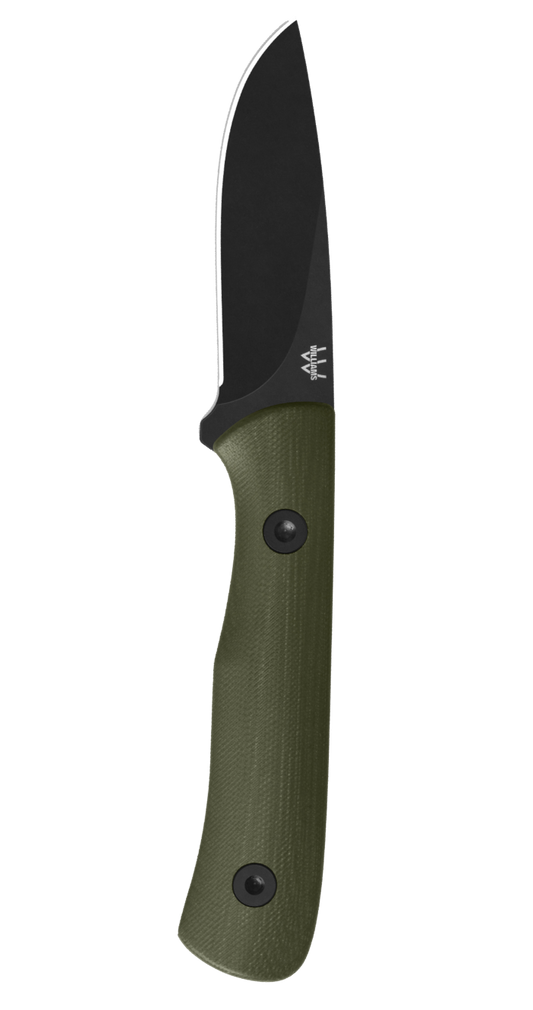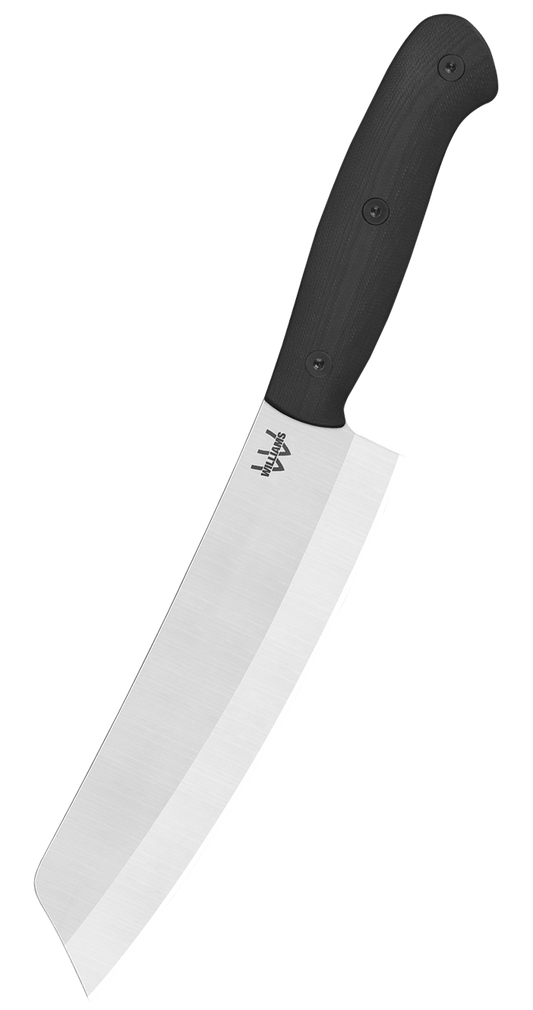How to Shuck an Oyster with an Oyster Knife
The Edisto oyster knife has been the recipient of a number of nationwide accolades for its beauty, craftsmanship, and functionality that makes it easy to shuck an oyster. That’s why some say it’s the knife that put the Williams Knife Company on the map. And as Edisto owners know, there are plenty of good reasons for the hype.
Featuring a tip that’s more pointed than a traditional oyster knife, along with a thicker blade, the Edisto — named Garden & Gun magazine’s “Overall Made in the South Winner” in 2011 — is by all accounts the finest oyster knife available on the planet. The knife’s ingenious design makes it perfect for prying into the backs of an oyster’s clumps and digging into its small hinges.
But even with the perfect oyster tool, when it comes to breaking into the infamously stubborn shell of an oyster, a little know-how can go a long way.

How To Shuck Oyster Oysters With a Knife
So, for those who may be new to the game, here’s a quick, step-by-step rundown on how to properly use a knife to shuck an oyster:
- Chill and inspect your oysters — To keep them as fresh as possible, your oysters should be kept chilled, and many people choose to keep them submerged in ice water during the shucking process. Before you start shucking, carefully inspect your oysters to ensure that none of the shells are already open. (Open shells usually indicate dead oysters, which are unsafe to eat. But if an open oyster closes when you tap on it, it’s alive and you should be safe to keep it.) Give each oyster a sniff and check its weight — good oysters should have a fresh sea smell and some heft to them, while any that feel light and/or have a strong odor should be tossed.
- Set up your gear and shucking space — First of all, it’s critical for shuckers of all experience levels to wear protective shucking gloves. Even the pros see the oyster knife slip on occasion — and while oyster knives aren’t nearly as sharp as other types of knives, they can still cause some serious damage to your hands with the force you’ll be using. You’ll also want to (of course) have your oyster knife handy, along with a stiff bristle brush, a tray covered with a bed of ice to set your shucked oysters in, a towel or two, and a trash can nearby for spent shell disposal.
- Brush and rinse your oysters — To prevent any sand or grit from getting into your oysters, you’ll want to start by rinsing them under cool tap water as you brush the shells with your bristle brush.
- Position your oyster — Next, grab your first oyster and take a look at it. The top shell will be flat, while the bottom shell will have a belly to it. Grasp the oyster in your holding hand with the belly (bottom) side down and the oyster’s pointed end facing toward your knife hand. The pointed end is where the oyster’s hinge is, which is where you’ll crack into it.

- Work your blade’s tip into the oyster shell’s hinge — Once you’ve located the hinge, start working the point of your oyster knife into it, wiggling and twisting the blade’s tip into the groove until you have some leverage on both the top and bottom halves of the shell. This is the part of the process that takes the most practice. It’s not about forcing the knife into the hinge, rather it’s more of a finesse move aimed at finding the sweet spot where you can gain the leverage needed to crack it open. (Note: While you’re shucking, be careful to keep the oyster as flat as possible — if you tilt or flip it once the shell is open, you’ll spill the juices out.)
- Twist and pry until you feel a “pop” — Once you’ve got your oyster knife placed firmly into the hinge, use a twisting motion (repeatedly if necessary) to pry the shell open. When you’ve successfully separated the top and bottom halves of the shell at the joint, you’ll feel a pop that lets you know you’ve cracked the hinge.
- Separate the shell’s top and bottom halves — You should now be able to slide your knife around the entire perimeter of the oyster shell and separate its top and bottom halves from one another. Try not to be too forceful, as you want to be careful not to get pieces of shell inside the oyster or damage the oyster meat itself. Also remain mindful not to tip the oyster, as you want to avoid spilling out its juice.

- Sever the top adductor muscle — Slide your oyster knife along the ceiling of the shell’s top half until you find where the oyster is attached to the shell at the adductor muscle, then sever it from the top half of the shell.
- Toss the shell’s top half — At this point, the top half of the shell is ready to go into the trash. If the shell’s top half is still attached to the bottom half anywhere, carefully separate it, keeping in mind that you want to keep the bottom half of the shell flat, still aiming to avoid spilling its juice. Once you’ve freed the top half of the shell, you can toss it.
- Clean your blade — Before touching the oyster meat with your knife, give it a quick wipe-down with your towel to remove any mud or shell pieces from the blade, as you don’t want to introduce any debris into the oyster’s fresh meat.
- Sever the bottom adductor muscle — Now, just as you did with the top adductor muscle, you’ll want to sever the bottom one. Slide your knife’s clean blade beneath the oyster meat and across the inner surface of the shell’s bottom half, When you find the attachment at the adductor muscle, cut it loose and leave the oyster meat sitting loose in its juices in the bottom half of the shell.
- Place the ready-to-eat oyster — This oyster is now ready to place on the bed of ice you prepared earlier. Set it in your tray, remaining mindful not to spill the oyster’s juice.
- Repeat the process — One down, lots more to go. Repeat all of the shucking steps outlined above until your oyster tray is full or until you’ve finished shucking all of your fresh oysters. Once complete, dress your oysters as you prefer to eat them, and enjoy!

About Williams Knife Co.
Originating in Charleston, South Carolina, Williams Knife Co. is the project and passion of avid outdoorsman and longtime knife-maker Chris Williams. Each handmade from blade to sheath using steel and natural materials, the custom hunting and fishing knives in the Williams Knife Co. lineup blend functionality and beauty to create useful works of art that can also serve as long-treasured heirlooms. To explore the full collection, click here.












